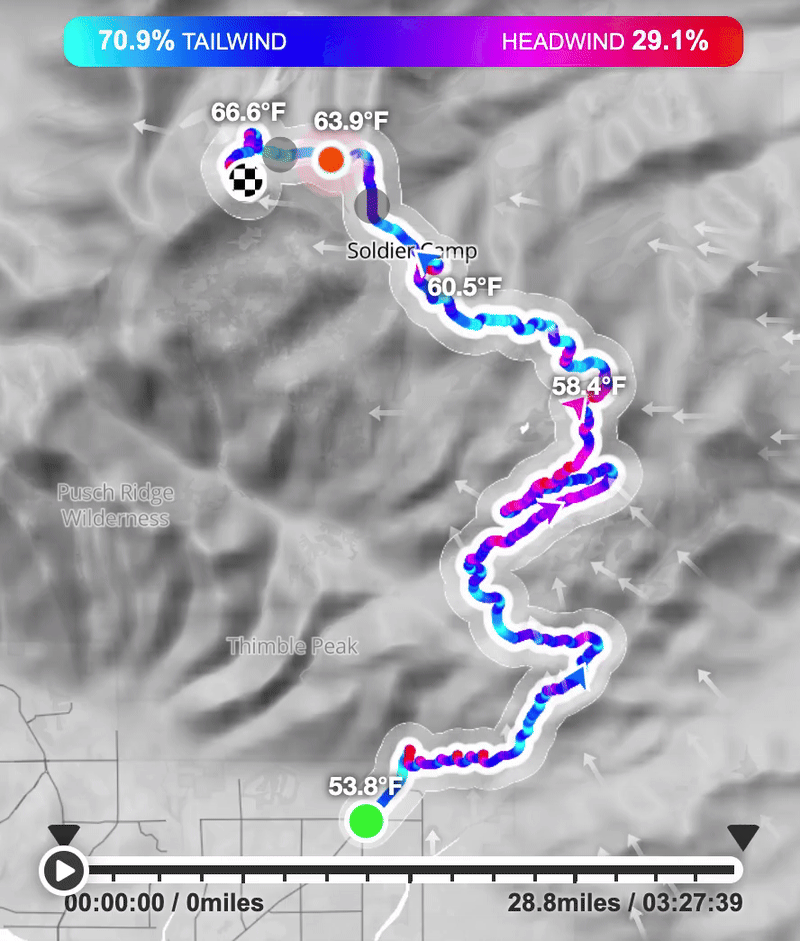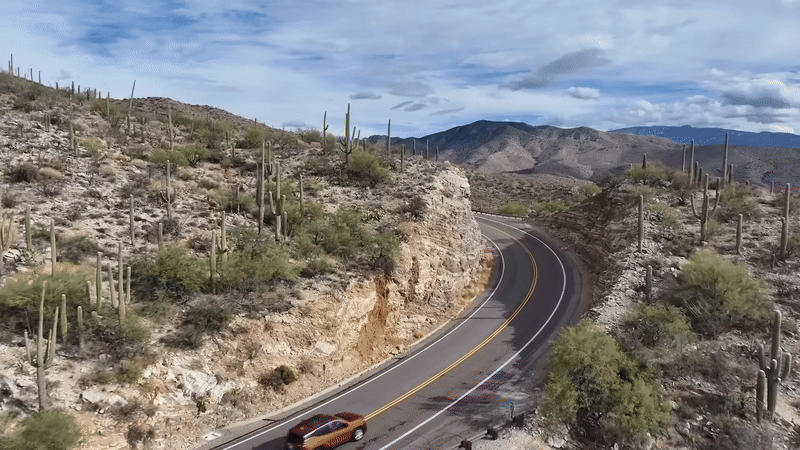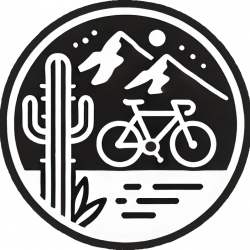Learn more about weather and wind conditions.
Cyclists planning to ride Mount Lemmon should be aware of extreme temperature variations between the base and the summit. In the winter, temperatures can remain near freezing even at midday when most riders reach the top. In the summer, early starts are essential, especially for those riding down to Tucson, as the base can reach dangerously high temperatures. You can view the current weather at the bottom of this page and monthly average temperatures below.
Winter Conditions
During winter, Mount Lemmon often experiences snow and ice, particularly near the summit and in shaded areas along the climb. The Catalina Highway may close temporarily due to snowfall, so checking road conditions before your ride is crucial. Up to date road conditions are available on the Pima County Road Condition HotLine +1 (520) 351-3351. The Mt Lemmon Weather and News Facebook page also tends to have recent information on winter road conditions. Even when the road is open, icy patches can persist throughout the day, making the descent hazardous. Proper gear, including gloves and thermal layers, is necessary to stay warm.
Summer Heat
Summers on Mount Lemmon bring extreme heat, especially at the base in Tucson, where temperatures can exceed 110°F. To avoid the worst of the heat, cyclists should start early—ideally at sunrise. The temperature at the summit remains significantly cooler, but descending into the heat of the valley later in the day can be brutal. Hydration is key, as water sources are limited along the climb.
Sunrise, Sunset, and Safety
In Tucson, sunrise varies from around 5:15 AM in June to 7:30 AM in December. Sunset ranges from 5:20 PM in winter to nearly 7:40 PM in summer. Note that Arizona does not observe daylight savings so the sunrise and sunset are later in the winter than elsewhere. Cyclists should plan their rides accordingly to avoid descending in the dark, especially on weekends when traffic is heavier. The descent has limited shoulder space, and visibility can be a concern in low light conditions.
Dressing for the Ride
Layering is essential when riding Mount Lemmon. In colder months, a thermal base layer, windproof jacket, gloves, and leg warmers are recommended, as temperatures can drop significantly on the descent. In summer, lightweight, breathable clothing is best for the climb, but a light jacket is still useful for cooler summit temperatures. Always check the forecast before heading out and adjust your gear accordingly.
Wind Conditions
Check out this image of the Mount Lemmon route on a day with a primarily tailwind. At the base, the wind was coming from the southeast, while higher up, it shifted to the east. (Remember, wind direction is always described based on where the wind originates!)

The route follows a northeast direction for roughly the first third of the climb before turning northwest for the remaining two-thirds. Winds from the east and south typically provide a more favorable tailwind. On the day shown in the image, a rider would have encountered a headwind in the middle portion of the climb while heading west—since the wind was coming from the east.
In most months of 2024, the prevailing winds on Mount Lemmon came from the west or southwest. However, during the fall (September through December), there were more days with wind from the east, which can make for a faster climb.
Current Weather
You can view the current weather for the bottom and top of the mountain using the dropdown below. The most detailed and accurate forecast can be found on on moutain-forecast.com.

